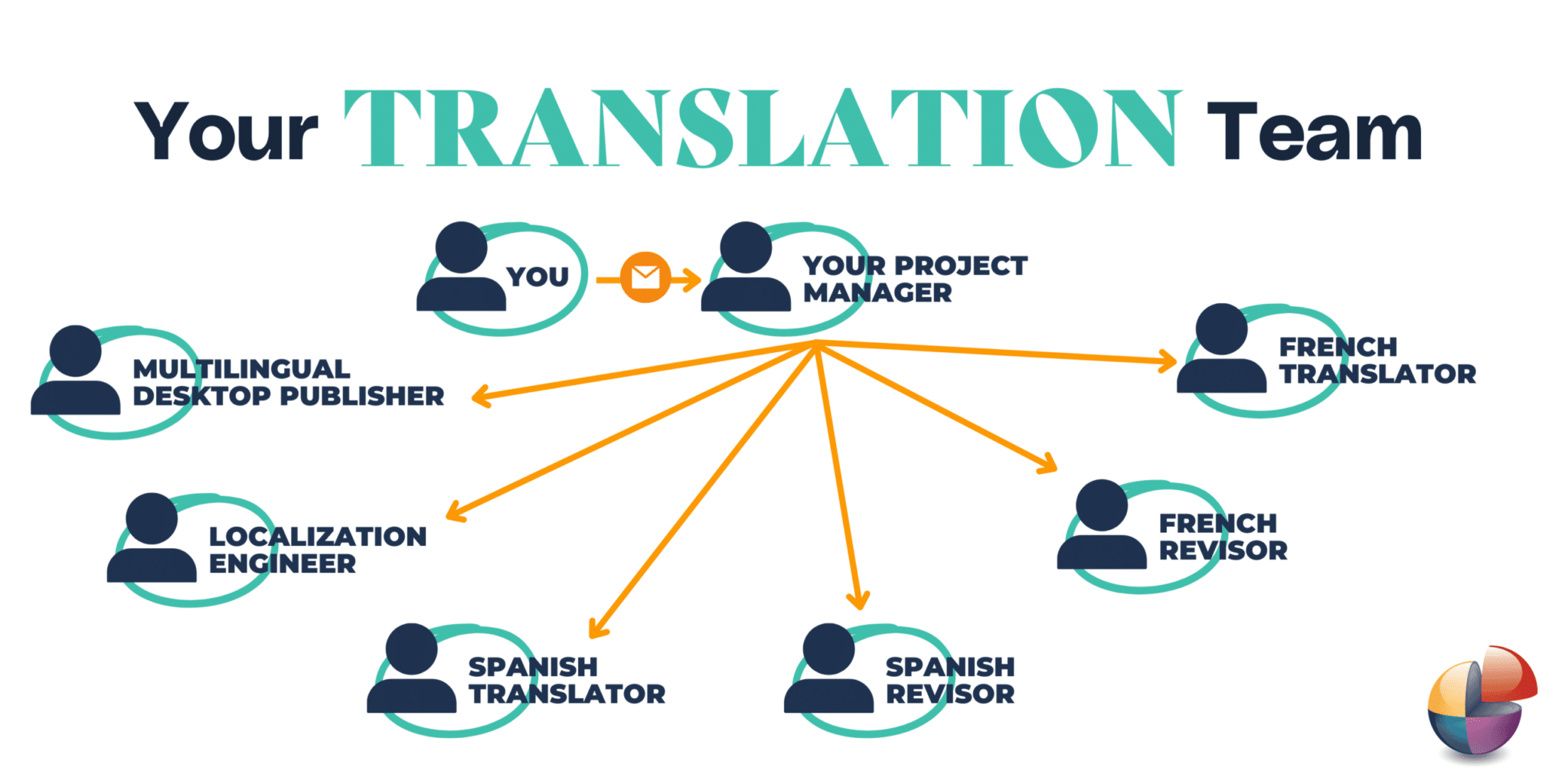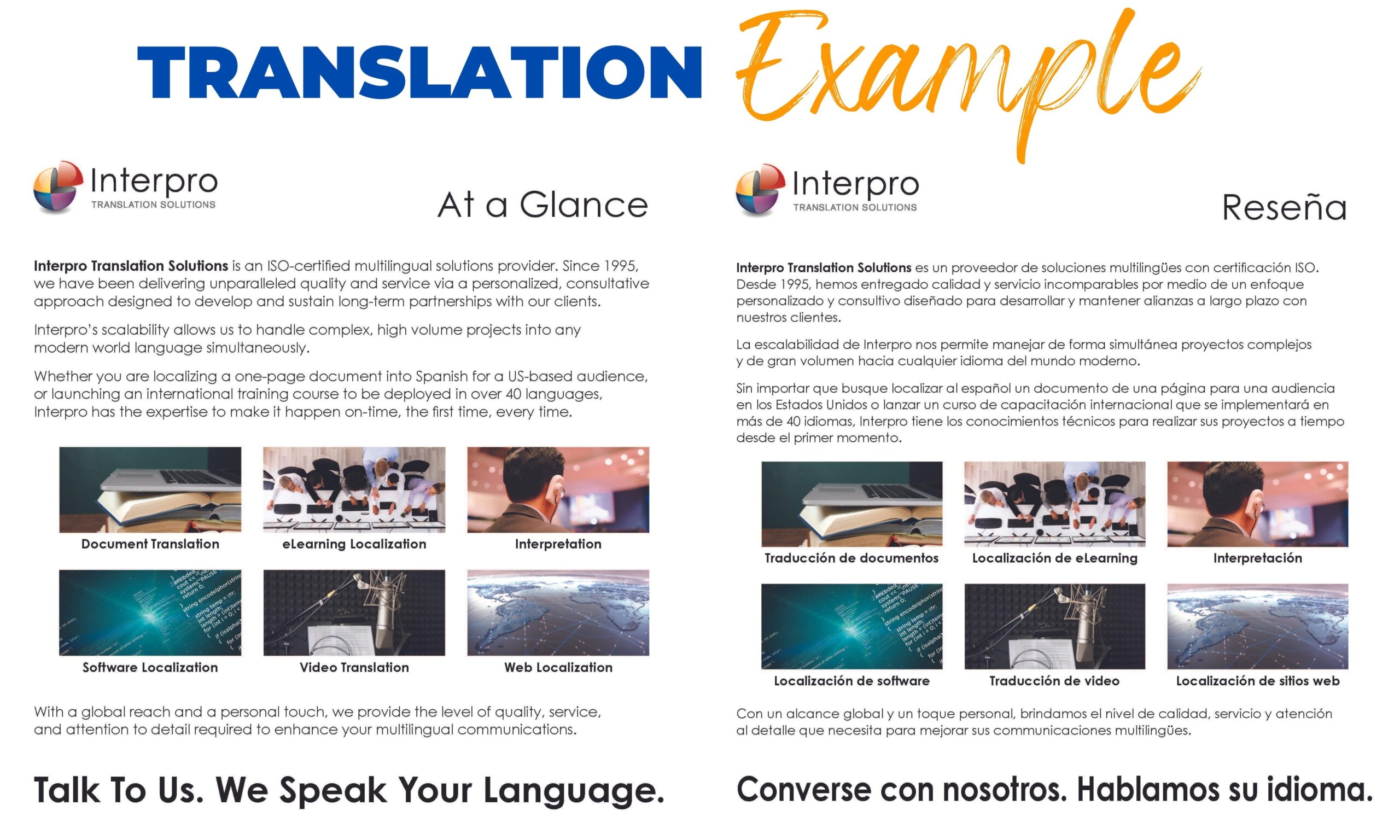Translating human resource (HR) documents is critical for global companies or companies with varied employee demographics. For human resource professionals, assisting employees is critical for job satisfaction and company success.
Plus, how will your employees uphold the company’s expectations if they can’t understand these documents? Translating your human resources documents can also protect the company from claims that the employee did not understand their rights and responsibilities.
But how do you find credible human resource translation services that you know will translate your HR materials accurately with a reasonable turnaround time?
Don’t worry! This is your Ultimate Guide on how to find a Professional Human Resource Translation Service to translate anything – from employee manuals and handbooks to codes of conduct and company policies.
Step 1: Determine what human resource documents you want to translate.
A professional translation agency can complete the translation process with any file type, format, software or platform available. Whether you’re translating PowerPoints or Word Documents, PDFs, video files, captions, training courses, or employee surveys, the format you work with shouldn’t be a problem for your translation agency.
If you find yourself getting stuck, a great translation service will also provide advice and be a resource you can consult with on the best way possible to tackle your translation projects. They will be able to answer any questions you have during the translation process.
When quoting your project, a translation agency will need your source documents and materials that you want to be translated.
Types of Human Resource Documents that Can be Translated:
Human Resource’s Mandatory Paperwork at the Start of Employment
- Employment contracts. If your industry uses contracts for employment, translating these documents may be a legal requirement.
- Employee manuals and handbooks. Many company policies and codes of conduct are included in the manual. Translating employee manuals can critically help a company’s multilingual employees.
- Insurance documents. Make benefits accessible for all employees by translating employee benefit policies.
Human Resource Training and Safety Materials
- Compliance documents. Certain industries might have compliance documents that employees must be able to read and understand (this includes other languages).
- Workplace safety documents. Material safety data sheets, evacuation routes, and other safety documents should be translated to ensure safety is thoroughly understood.
- Training programs and videos. Translation is not just for paperwork! Don’t forget to provide access to any multimedia like videos, slide decks, and audio recordings.
- Performance review materials. Help them get the maximum understanding of feedback from their performance review and translate their copy.
Day-to-Day Tools for Human Resources
- Tip sheets and planning tools. Any resources that make it easier for employees to perform their job duties should be available to everyone.
- Guides for managers and employees. Employee development materials and guides should be translated for both parties.
Corporate Communications (Sometimes for Human Resources or Internal Marketing Department)
- Corporate websites. From the website content to the user interface, websites should be translated for all employees (as well as any markets you do business in!).
- Company-wide emails or memos. Anytime communications are sent to employees, these should be translated for all to understand.
Again, your translation agency should be able to handle any file type or format that you work in.
Step 2: Five questions to ask a potential translation agency.
When selecting a translation agency service to translate your human resources documents, there are a few crucial questions you should understand and ask your potential translation agency. You should feel more confident in moving forward if your translation agency can answer these questions. Plus, you can always ask for a sample translation!
Do you have ISO Certifications?
You’re looking for a company that will deliver services in accordance with ISO Certifications 9001 (Quality) and 17100 (Translation). Learn more about why you want an ISO-Certified Company here.
Do you use machine translation?
Ideally, your translations will be completed by human translators, but some companies use machine translation, which is notorious for making errors and bad translations. You’ll want to do the following:
- Ask more questions to ensure they have proofreading and revision processes to catch any errors.
- Ensure that pricing reflects that Machine Translation is being used, and not a human translator.
Do you include proofreading and revision in your translation process? What is your translation, revision, and proofreading process?
Not only should your translation agency include proofreading and revision as part of their translation workflow, but they should also:
- Ensure that the translator and revisor are two separate people. Just as you shouldn’t proofread your own work in English, your translator and proofreader should be two separate people.
- Look for how they will resolve any errors you find in the final translation. The translation agency should have a policy to resolve any errors that occurred during the translation process quickly.
Are your translators Subject Matter Experts in human resources, and are they located in the country where the target language is spoken?
Your translation agency should try to pair your translation project with:
- the language and
- the topic being translated. If you’re translating complicated medical instructions or a binding legal contract, you want to ensure that the crucial message is translated, not just word-for-word. And by ensuring the translator is located in the target country where the language is spoken, you’ll get a Subject Matter Expert in the language (resulting in the most accurate translations).
What is the turnaround time for the average translation project?
Project turnaround times depend on the number of words you’re translating, the number of languages, if it’s simple document translation or if you need voice-over for videos. But your translation agency should be able to let you know if your project will take days or weeks.
Step 3: The translation agency should provide a project quote and Project Manager.
Once you receive and approve a quote, it’s time to start the project! Good translation agencies will provide a dedicated Project Manager.
Ultimately, you’ll save time and money using a good translation company that provides a dedicated Project Manager for your translation projects. Your Project Manager takes on all aspects of translating a document once you provide them the finalized version in English.
Your Project Manager will be your single contact for all your language needs. They will organize your language team, communicate project updates, and ensure your project is delivered on time. Here is an example of what a translation team could look like for a simple document that needs translated into two languages:

As you can see a Project Manager is critical to keeping your work load at a minimum and getting the most for your investment when working with a translation agency.
The translation agency will then match your translation project with a subject matter expert (SME) who understands the content in your target language.
An SME will examine the content in English and localize the content to the target language. This is an example of an English to French document translation for a company that repeatedly used the phrase “as easy as pie” in their English onboarding materials.
Or another example of an SME…
- You’re translating human resource benefits plans, employee manuals, and employee contracts from English into Spanish
- A good translation agency will then provide you with a translation team that will include a professional translator who is a Subject Matter Expert (SME) of translation documents from English to Spanish.
- Depending on the complexity of the material being translated, your Spanish translator may also be an SME in legal jargon. This helps ensure any legally binding agreements are localized to the target language and fully understood.
Step 4: Human Resources receives the final translated documents.
The translation agency will deliver the final translation, exactly as you sent it, just in a new language! The goal is for the person reading the translated material to never know that the content was translated – just that it was written for them, in their native language.

English to Spanish Document Translation Example
It’s crucial to ensure that all of your human resources documents, materials, and communications are translated accurately and with a reasonable turnaround time.
A Warning about Machine Translation
Companies that use Machine Translation (also known as MT) can be more affordable but are often more inaccurate. They are incapable of taking tone and circumstance into consideration, which can lead to potentially damaging miscommunications. Protect both employees and your company by partnering with an expert human resources translation services firm.
Have more questions about translating for human resources that we didn’t cover? Let us know! Contact us today!
Get a Professional Translation Service for Your Human Resource Translation Materials
HR professionals can find a partner in Interpro Translation Solutions. No matter the number of items that need to be translated, the number of languages, or the timeline, Interpro has an expert team to meet your translation needs. Our proven expertise in human resources translation services quickly delivers accurate information to support your employees.
Other Related Articles
Website Localization for International Success
8 Tips for Writing with a Multilingual & Cross-Cultural Audience in Mind


